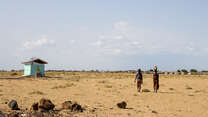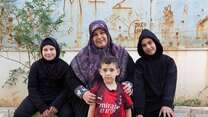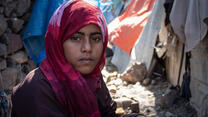As the European refugee crisis highlights, displaced people are increasingly travelling to or through towns and cities, rather than being accommodated in centralised camp settings. Today, more than half of the world’s displaced people live in urban areas and will, on average, continue to be displaced for over a decade.
The humanitarian sector must adapt to meet the challenges of an urbanising world and the increasing role of cities as places of refuge, as well as sites of heightened risk of crisis, marginalisation, and inequality. It is therefore critical that humanitarian actors take a coordinated and collaborative approach to supporting refugees and migrants, tailoring their response to suit the urban context and its various stakeholders.
Urban areas are characterised by the size, diversity and mobility of their populations, the density and diversity of the built environment, the number and diversity of government, civil society, private sector and academic organisations, and the reliance of urban populations on social, political, technical and economic systems rather than the natural environment for their livelihoods. These characteristics create both opportunities and challenges for actors responding to urban crises. In particular, they create an imperative for the humanitarian sector to adapt to the complexity of urban environments, the diversity of their populations, and the large variety of stakeholders present within them.
The arrival of large numbers of people in an urban area brings challenges for both displaced and host populations. It also presents opportunities. Currently, however, both the challenges and opportunities are not adequately recognised or addressed in humanitarian response. The emergency response to an unexpected influx of asylum seekers and other migrants in a town or city sees “traditional” humanitarian actors sharing the field of operations with a broader range of stakeholders than they are used to cooperating and coordinating with. Additionally, this is an environment in which local and/or national actors will often have an existing operational presence and where local authorities will expect to continue to exercise (and have respected) their mandate for oversight of the activities taking place in their constituencies.
This report underlines the importance of a coordinated and collaborative approach to emergency response in urban areas. The recommendations, addressed primarily to humanitarian actors, reflect lessons learned from the International Rescue Committee’s (IRC) initial emergency response programming on the island of Lesbos, Greece, between September 2015 and March 2016, while the crisis on Lesbos was at its peak. This report is not a reflection of the IRC’s current programming on the island. The findings recognise the complexity of urban areas and the need for greater coordination of response activities and better collaboration among responders, stakeholders, and local communities.
This report also contributes to the continuing discussion around how to improve urban humanitarian response. The findings and recommendations are intended to build on the growing knowledge base around good practice. It is not an evaluation, but rather a product to inform and influence operational practices and policies in ongoing and future responses to humanitarian crises in urban settings.
Findings
The findings and recommendations in this report look for ways to overcome the challenges and leverage the opportunities arising from humanitarian operations in urban areas, bringing benefits for both displaced populations and the communities in which they reside. The main findings, in summary, are:
- The IRC’s early engagement with the Municipality of Lesbos led to mutual benefits in the immediate term, and was approached with a view to ensuring positive long-term impact as well.
- Working with the existing urban systems of Lesbos – both public and private – to deliver humanitarian programming proved particularly effective. Where existing systems were inadequate or appeared to be operating in ways that were problematic, the IRC sought to engage in ways that addressed gaps and ameliorated or mitigated problematic practices.
- A more coordinated approach, in which organisations and individuals engaged in the humanitarian response – including volunteers and civil society actors – were more willing to recognise one another, and to ensure complementarity in the diverse activities taking place, would have improved the prioritisation of efforts and the effectiveness of the response.
- Despite the fractured nature of the response, the IRC managed to build relationships with actors at all levels of the response (from private individuals through to municipal authorities). These relationships proved critical to efforts to magnify the impact of the IRC’s activities.
- Purposeful and ongoing engagement and advocacy with the local population, particularly in Molyvos, would have strengthened the IRC’s response.
- Tensions between host and hosted populations were exacerbated by a lack of reliable, accessible and relevant information. Rumours and misinformation circulated unchecked, undermining social cohesion, and leading to suspicion, strained relationships, poor prioritisation and use of scarce resources and even unsafe decision-making.
Recommendations
- Accountability to host populations needs to be strengthened. In order to better achieve this, humanitarian actors should engage with local authorities early in their emergency response and ensure that this engagement is ongoing throughout the operation.
- Humanitarian actors responding to urban crises must strive to achieve effective coordination, which includes local authorities, local non-governmental organisations (NGOs), communities, and volunteer groups. Establishing and maintaining meaningful partnerships between these various stakeholders will generate stronger and longer-lasting benefits for affected populations.
- Meaningful participation of local communities is essential. In addition to the fact that affected communities – host as well as hosted – have the right to be consulted and to take part in activities that affect them, participation that leverages local capacities has been shown to increase the effectiveness and appropriateness of humanitarian response. Active engagement of local people can also be expected to contribute to improving social cohesion, not least between displaced and host populations. When interacting with the local community, humanitarian actors should provide timely information, manage expectations, and promote transparency on behalf of the NGO sectors.
- Humanitarian actors should prioritise the use of existing urban service delivery mechanisms wherever possible and appropriate, rather than engaging in direct service delivery. Ideally, humanitarian organisations should look for ways to strengthen local systems where these are weak, to identify gaps and advocate for local solutions to address them, and to undertake direct service delivery only as a last resort, ideally while working to put in place a more sustainable, locally led solution.



